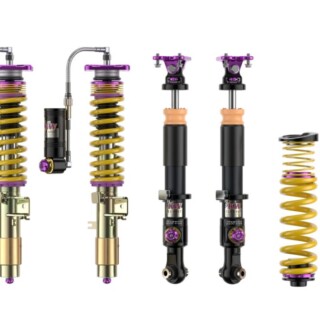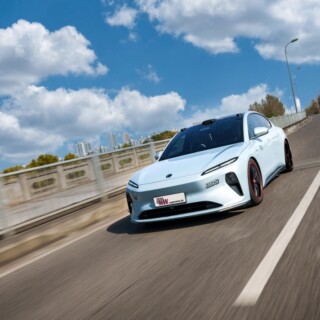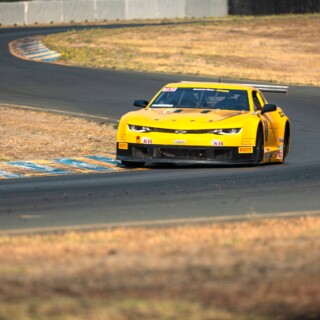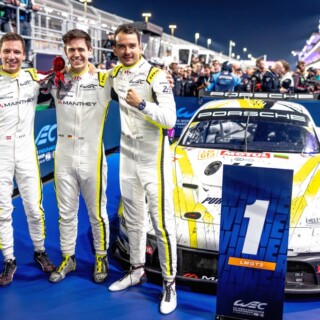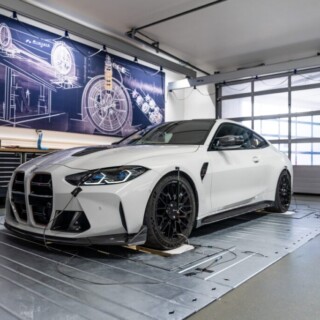
Certainly, some of you have already noticed that we were visiting the booth of our KW Japan subsidiary at the Tokyo Auto Salon at the beginning of this year – don’t worry, soon you’ll find more information about the lowered Mercedes-Benz Unimog here …
Along with Larry Chen and the Hoonigans, we were on location at various partners and customers of the KW automotive group in Japan, such as Studie AG and Spoon Sports, in order to capture the Japanese automotive scene for the Hoonigan AutoFocus channel.

One of the most popular vehicles, not just in Japan, is the Toyota Corolla AE86, offered from 1983 to 1987 as a two-door notchback and three-door hatchback coupé. It was a must for us to show visitors at the Tokyo Auto Salon that we have also developed various KW suspension kits for these Japanese Classics.

For those who don’t know what to do with these compact, high revving, rear axle powered, fun machines, we try to bring these Toyota Corolla’s a little bit closer to them with this blog post. The old “Hachi Rokus” – Japanese for eight-six (86) – are in some way a kind of “Japanese BMW E30”. And for some enthusiasts, the old Corolla’s are more cult than anything offered by other car manufacturers in this price range at that time.

That’s why, for example, we offer several KW Classic Coilover suspension kits for the racetrack (here you can see the KW Competition prototype in Dais AE86) and the road for these cult Japanese Vintage cars as part of the expansion of our KW Classic suspension range. If you have any questions about suspension, just ask our colleagues at KW; we have some die-hard JDM fans in the company.
But why in Asia and North America the AE86s, which are available in different versions, are so popular is partly due to the manga book, Initial D, the anime series born out of it, and partly because of a certain “Drift King”. But we are not talking about various self-proclaimed kings – more about that later.

Yoshinori Kamata has his workshop and headquarters of “TEC-ART’S” in Saitama, a “smaller city of millions” in the Tokyo metropolitan region. TEC-ART’S is undeniably one of the most famous addresses in the world for modified Toyota AE86 for motorsport and also for the road.

This is why Kamata-san’s shop, which is, as so often in Japan, located in a rather unpretentious industrial zone, is fully parked and packed with various “Hachi Rokus”.

But TEC-ART’S is not only known for Toyotas but also some D1GP vehicles is the work of the small team. In all kinds of weather, due to the lack of space in Japan, treasures like this Silvia S15 are simply parked in the backyard.

As Kamata-san tells us, he has also developed several body kits and motorsport equipment for Alfa Romeo models. But the main business of TEC-ART’S is, of course, focused on the Toyota AE86.

At first glimpse, the workshop is quite confusing, but as long as Yoshinori Kamata doesn’t lose track of what’s going on, everything is fine.

This is where the famous “TEC-ART’S AE86 N2“, which has been in use for ages, will be located from our booth again. Before you ask yourself why we exhibited the N2 at the TAS (Tokyo Auto Salon) at all, it’s because we are still working on various motorsport dampers for the AE86.

And TEC-ART’S is one of our development partners, especially for the Toyota AE86. The N2 currently has a two-way adjustable racing suspension installed, where we also use rear shock absorbers in contrast to our KW Classic suspension program for the AE86. Normally the AE86 has a rigid axle with a Panhard bar.
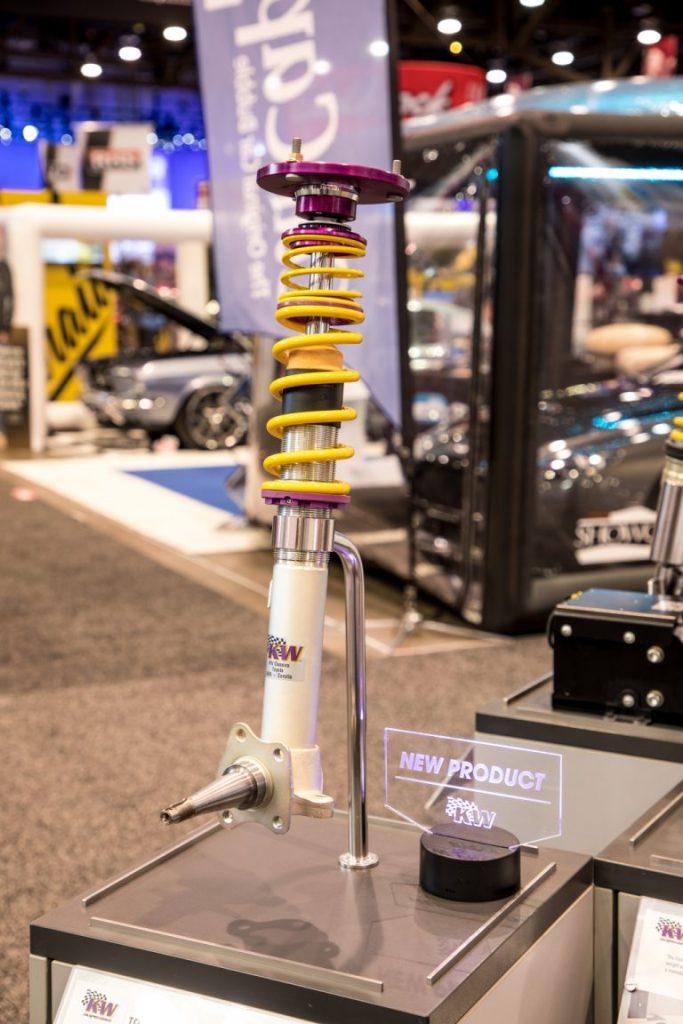
For the AE86 enthusiasts among yourselves, who saved a Toyota E8 Corolla or an AE85 or AE86 Coupé from being scrapped, rusted or exported to the Middle East and North Africa, we have advice. If you want to buy a suspension for your “Hachi Roku”, always choose only one in combination with the original steering knuckles/spindles.
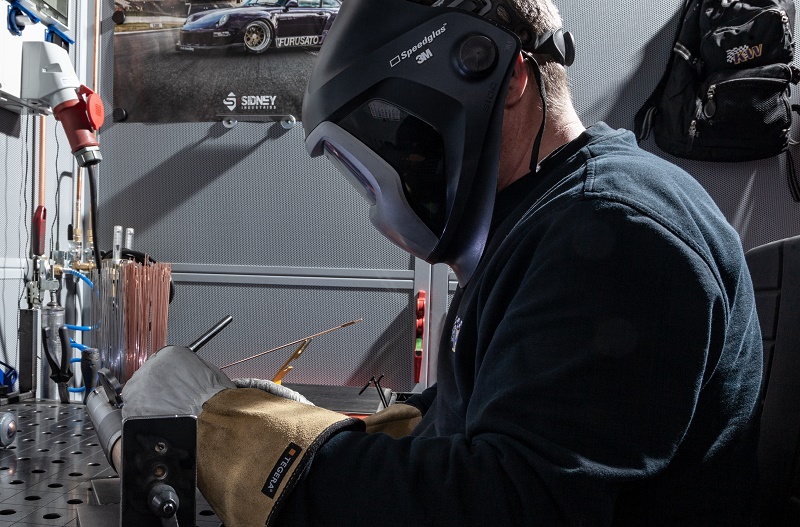
For instance, if you want to buy a KW Classic suspension for the road that has shocks in compression and rebound independently adjustable, or one of the various KW Competition racing suspensions available for the Toyota, then please send us the original struts. Our colleagues will then process them and use the wheel hub carriers or OEM spindles for the conversion of the front suspension struts with the modern KW suspension and, of course, with multi-valve damper technology.

In addition to AE86 and the Alfa Romeo models already mentioned, TEC-ART’S also has the expertise for Nissan 180SX, Nissan 200SX and Nissan 240SX of the various series such as S13 and S14 as well as the S15 Silvia.

Thanks to its many years of involvement in motorsports, the Japanese company not only produces body parts but also transmissions, differentials, and engine conversions. They are very well known in the Japanese AE86 scene, if not the authority, especially for their own exchange engines.

The heart of TEC-ART’S engine conversions for the Toyota AE86 are always performance-enhanced Toyota four-cylinder engines with Toyota’s five-valve cylinder heads (4A-GE 20V). As these engines are no longer produced, the Japanese are revising old four-cylinders and rebuilding them completely from scratch.

The engines modified by TEC-ART’S also have forged pistons, which are manufactured at Koizumi Shokai. Besides camshafts, TODA valve springs, ARP studs, TRD motorsport components and much more are added by TOMEI exclusively manufactured for TEC-ART’S. The naturally aspirated engines with their individual throttle systems turn over 9000 rpm and with a displacement of 1.805 ccm. Depending on the setup and injection quantity, the power output is 200 – 225 hp.
As the teaser picture of the YouTube video already reveals, the famous AE86 by Keiichi Tsuchiya is “subordinated” to TEC-ART’s. Does the name really mean nothing to you?

Let’s explain this a little bit about it. Keiichi Tsuchiya is the “Drift King” – the real Drift King, the only true Dorikin. Years ago, back in 1999, he founded the roots for the first professional D1GP championship with Option Auto publisher and editor-in-chief, Daijiro Inaada, whose concept has since been copied by every drift organizer.
But Dorikin alias, Drift King, has been racing for much longer in motorsport and even longer in touge drift. Keiichi Tsuchiya drove in numerous endurance races and championships as a professional racer, who in 1977 came into motorsport as an “underdog”. Some may say, he drifted into professional motorsport via “semi-legal” touge drifts in the seventies.

Keiichi Tsuchiya also drove in the 24h race of Le Mans, in the JGTC Touring Car Championship and all the more so in NASCAR! Yes, he even landed a cameo appearance in “The Fast and the Furious: Tokyo Drift”.

At TEC-ART’s, the AE86 of the Drift King is parked, which he drove in the numerous “Hot Version’s Gunsai Touge” videos! Incidentally, recently a Japanese car magazine published a comparative test with Tsuchiya-san with our various suspension applications for GT86 and of course the AE86.

Because the Toyota GT86 is the official successor of the Corolla AE86, we don’t really need to mention it, do we? Why this, more than 30 years old, Toyota Sprinter Trueno alias, Corolla A86 is so legendary is also due to the numerous, and often only at second glance, visible modifications. Speaking of which, the car has a combat weight of fewer than 950 kilograms!

The TEC-ART’s 7AG 1.8-liter, four-cylinder engine with its five-valve technology currently produces 223 bhp in the Drift King’s working unit and revs up the range. It’s no wonder that the lightweight AE86 can keep up with many larger and, above all, more modern calibers.
Keiichi Tsuchiya’s personal AE86 is not just a showpiece but is still actively driven and has to be used for many crazy ideas of Yoshinori Kamata. For example, a transmission conversion with a five-speed manual gearbox without fifth gear, but with the gears 1, 2, 3, 3.5 and 4 as well as reverse gear …
Images Larry Chen, Video Hoonigan, Best Motoring; Words C. Schmidt



